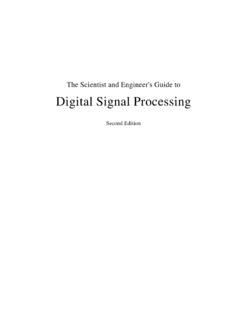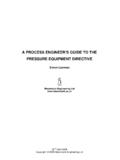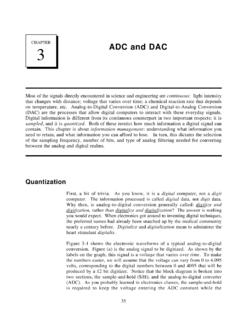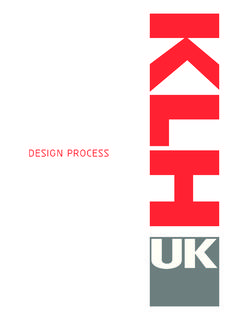Transcription of PIPING - Kalhour
1 PIPINGMATERIALSSELECTION ANDAPPLICATIONSS mith / PIPING Materials guide Final Proof 10:45pm page iSmith / PIPING Materials guide Final Proof 10:45pm page iiPIPINGMATERIALSSELECTION ANDAPPLICATIONSByPETER Professional Publishing is an imprint of Elsevier Smith / PIPING Materials guide Final Proof 10:45pm page iiiGulf Professional Publishing is an imprint of Elsevier30 Corporate Drive, Suite 400, Burlington, MA 01803, USAL inacre House, Jordan Hill, Oxford OX2 8DP, UKCopyright 2005, Elsevier Inc. All rights part of this publication may be reproduced, stored in a retrieval system, or transmitted inany form or by any means, electronic, mechanical, photocopying, recording, or otherwise,without the prior written permission of the may be sought directly from Elsevier s Science & Technology RightsDepartment in Oxford, UK: phone: ( 44) 1865 843830, fax: ( 44) 1865 853333, You may also complete your request on-line via theElsevier homepage ( ), by selecting Customer Support and then Obtaining Permissions.
2 Recognizing the importance of preserving what has been written, Elsevier prints its books onacid-free paper whenever of Congress Cataloging-in-Publication DataApplication Library Cataloguing-in-Publication DataA catalogue record for this book is available from the British : 0-7506-7743-0 For information on all Gulf Professional Publishingpublications visit our Web site at 10987654321 Printed in the United States of America Smith / PIPING Materials guide Final Proof 10:45pm page ivCONTENTSP reface .. vii1 The PIPING Material engineer .. 12 process Industry Codes and Standards .. 113 Materials.. 374 PIPING 1315 Joints for process PIPING Systems.. 1716 Bolts and Gaskets .. 2017 Valves.
3 2138 Glossaries and Abbreviations .. 243 Smith / PIPING Materials guide Final Proof 10:45pm page vvSmith / PIPING Materials guide Final Proof 10:45pm page viPREFACEThe PIPING Material Selection guide for process Systems, as the titlestates, is a guide for the PIPING engineer who is faced with the challengeof choosing the correct PIPING materials of list of codes and standards in ASME that apply to processplant design is huge, and it is impossible to cover them all in one I use ASME as the basic construction code, and I brieflytouch on the most significant codes and standards applicable to thedesign of the EPC contractor is responsible for having all the necessary codesand standards available at all times during the design, construction, andcommissioning of the plant.
4 These standards must be the final referencepoint, and the objective of this book is to guide the PIPING engineer tothat the function of a PIPING material engineer is driven by codeand specifications, there is no substitute for all-around experience. Thiscan be gained from several areas: the design office, a manufacturer sfacility, the fabrication yard, as well as the job site. Exposure to as many ofthese facets of the process industry as possible is beneficial to the growthof an engineer s professional development. Each sector has its owncharacteristics, and knowledge of one aids the comprehension the design office is where the project evolves and is engineered anddeveloped on paper. A manufacturer s facility is were the numerousindividual components essential for construction of the project are PIPING this includes pipe, fittings, flanges, valves, bolts, gaskets, andthe like.
5 In the fabrication yard, the welded PIPING components are spooled up for transportation to the job site. At the job site, paper andhardware come together and final fabrication and erection take various PIPING systems are commissioned, and the project is broughtto its conclusion and finally handed over to the client s operators. Allthese phases of a project are equally important, and it is very importantSmith / PIPING Materials guide Final Proof 10:45pm page viiviithat the engineer understand the challenges that arise in these verydifferent PIPING Material Selection guide for the process Systemsis writtento be useful to all PIPING engineers and designers involved in the design,construction, and commissioning of oil, gas, and petrochemical , it is primarily aimed at the PIPING material engineer , theindividual responsible for the selection and the specifying of pipingmaterial for process engineering and the materials used in the construction of pipingsystems is a huge subject.
6 It is virtually impossible to cover all aspects ofit in depth in one volume. In this book, I try to cover the most importantareas and introduce the reader to the fundamentals of the specificsubjects. I suggest readers skim through the pages to gain a familiaritywith the topics covered. I have introduced each subject and then linked itwith text and technical data. I limit my use of opinions and concentrateon mandatory statements that are set out in the design codes. Thesestandards must be met or improved of the individuals I have worked with have developed their skillsby working with fellow engineers who imparted their knowledge to theuninitiated. The ingredients that go into making a good engineer are notfully taught in schools, colleges, or universities, but by experience gainedlistening to more-knowledgeable colleagues, absorbing information, andthrough personal be a complete engineer , it is essential not only to have knowledgebut to share this knowledge with fellow PIPING engineers and othercolleagues.
7 A PIPING material engineer s role is driven by codes,standards, technical data, and catalogued information. When asked aquestion I believe that, if possible, the answer should be supported with acopy from the relevant source of information. This allows recipients tofile the information, makes them more confident, and protects the pipingmaterial engineer . It is a small action that pays big several excellent textbooks on PIPING design and PIPING stress,I know of none that specializes in PIPING materials. It is not the intentionof this book to explain the geometry of the numerous PIPING componentsand how their final shape is computed. All the PIPING componentsdiscussed in this book are covered by strict design codes or recognizedmanufacturers standards.
8 Their dimensions are carefully calculated andunlikely to change dramatically in the near or distant future. Indeed,most have remained the same dimensionally for several decades / PIPING Materials guide Final Proof 10:45pm page viiiviiiPrefacePiping engineering is not rocket science. As a fellow engineer , not apiping specialist, once said, I thought that the Romans sorted pipingout. Not true, but I see where my colleague was coming from. Thepiping content of a project is generally the largest of all the disciplines inmaterial value, engineering, and construction personnel. PIPING engin-eering also creates large volumes of paper in the form of drawings,specifications, and support documents.
9 What it lacks in technicalcomplexity it more than makes up for by the volumes of paperwork,which seem to increase each , to conclude, although PIPING may not advance as quickly as otherdisciplines, such as instrumentation and electrical, which are drivengreatly by vendors and technology, PIPING does not stand still. Newmaterials are always being developed, as well as fresh methods ofmanufacturing and new designs, that constantly fine-tune what weinherited from our friends the this book does not completely answer your questions, I feel sure thatit will guide you in the right SmithFano, ItalyJune 2004 Smith / PIPING Materials guide Final Proof 10:45pm page ixPrefaceixSmith / PIPING Materials guide Final Proof 10:45pm page x1 THE PIPING MATERIALENGINEER1.
10 WHAT IS A PIPING MATERIALENGINEER?This chapter explains briefly the role of the PIPING engineer , who isresponsible for the quality of PIPING material, fabrication, testing, andinspection in a project and the major activities such engineers areexpected to perform. This individual can be employed by either the EPC(engineering, procurement, and construction) contractor or the operator/end Job TitleThe PIPING engineer , the individual responsible for creating the projectpiping classes and the numerous PIPING specifications necessary tofabricate, test, insulate, and paint the PIPING systems, is titled either thepiping material engineeror thepiping spec(ification) Job ScopeWhatever the title, the PIPING material engineer (PME) is a veryimportant person within the PIPING Design Group and should be1 Smith / PIPING Materials guide Final Proof 10:47pm page 1dedicated to a project from the bid stage until the design phase has beencompleted.








